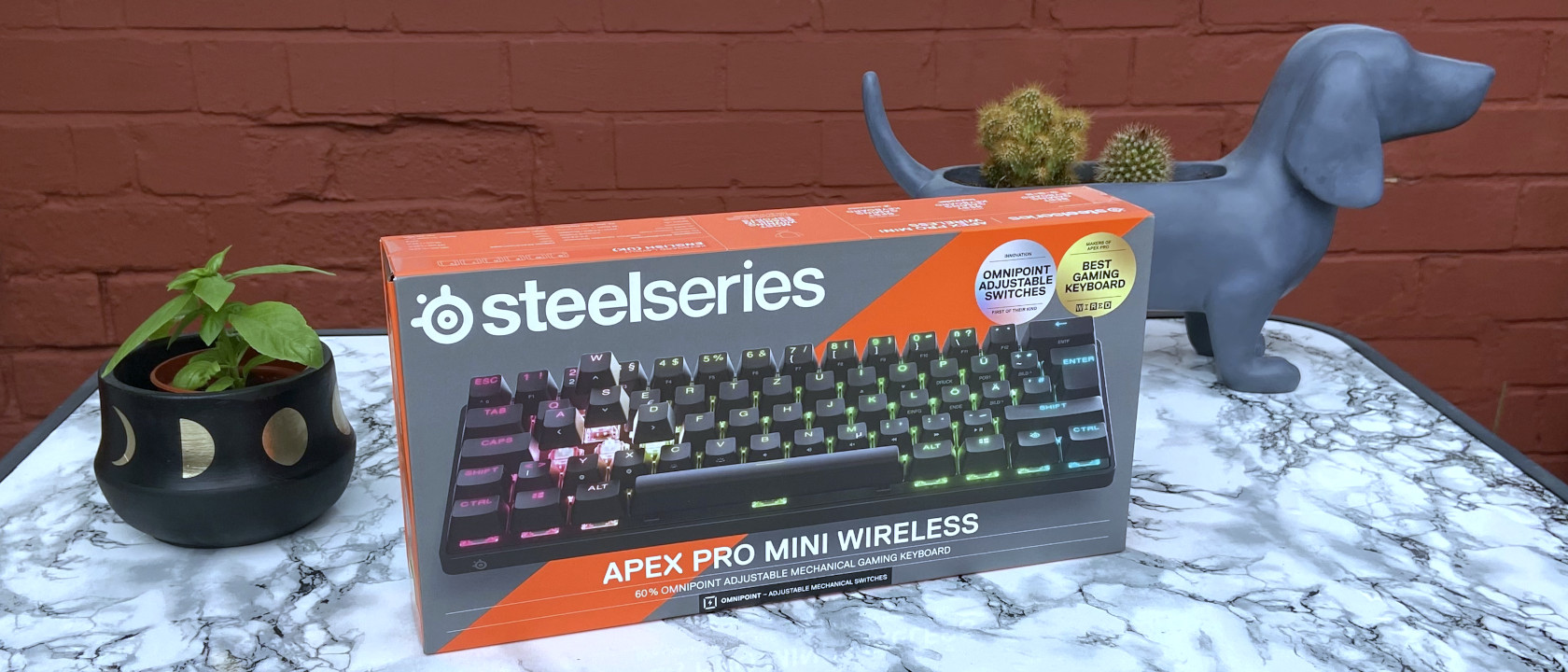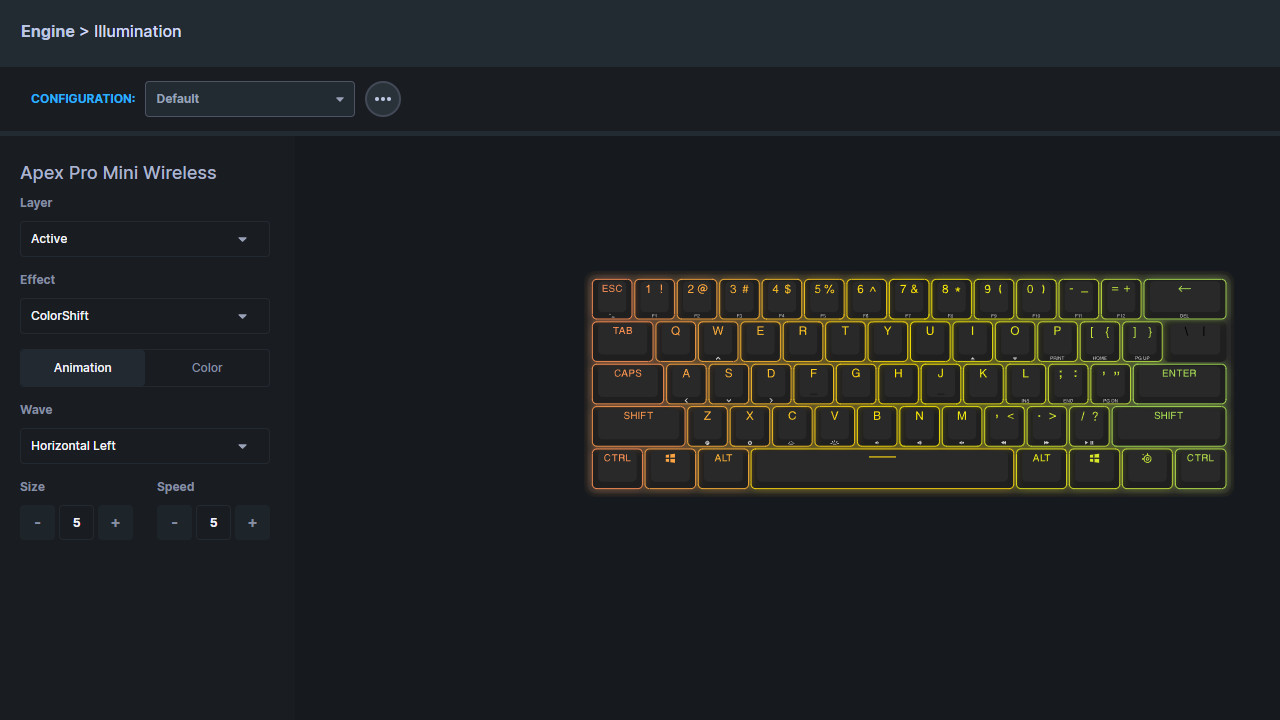Windows Central Verdict
A beautiful design built from high-quality parts, this tiny mechanical keyboard makes fast-paced gaming a breeze with adjustable actuation and dual per-key bindings. Still, updates to the SteelSeries software are needed to take full advantage of the vibrant RGB, and an astronomical asking price skews its value for money.
Pros
- +
High-speed wireless connectivity
- +
Vibrant per-key RGB illumination
- +
Adjustable actuation for every key
- +
Practically perfect for fast-paced gaming
Cons
- -
Secondary key functions are not illuminated
- -
GG Engine app needs updates and revisions
- -
Dual bindings are tricky to learn
- -
Enormous asking price
Why you can trust Windows Central
To say SteelSeries is a well-known brand in the gaming scene would be an understatement. They've been manufacturing high-quality accessories for years, including partnerships with esports teams for high-end peripherals like the Apex keyboard range.
Their latest offering is the Apex Pro Mini Wireless. The compact 60% form factor might seem too small for some, but this miniature gaming keyboard has some clever tricks. With SteelSeries OmniPoint adjustable switches, you can adjust the sensitivity and double-up on functions for every key.
It's an exciting idea for a space-saving keyboard, and the built-in LEDs provide that classic gaming aesthetic, but how does it perform in real-world tests?
SteelSeries Apex Pro Mini Wireless: Price, specs, and availability
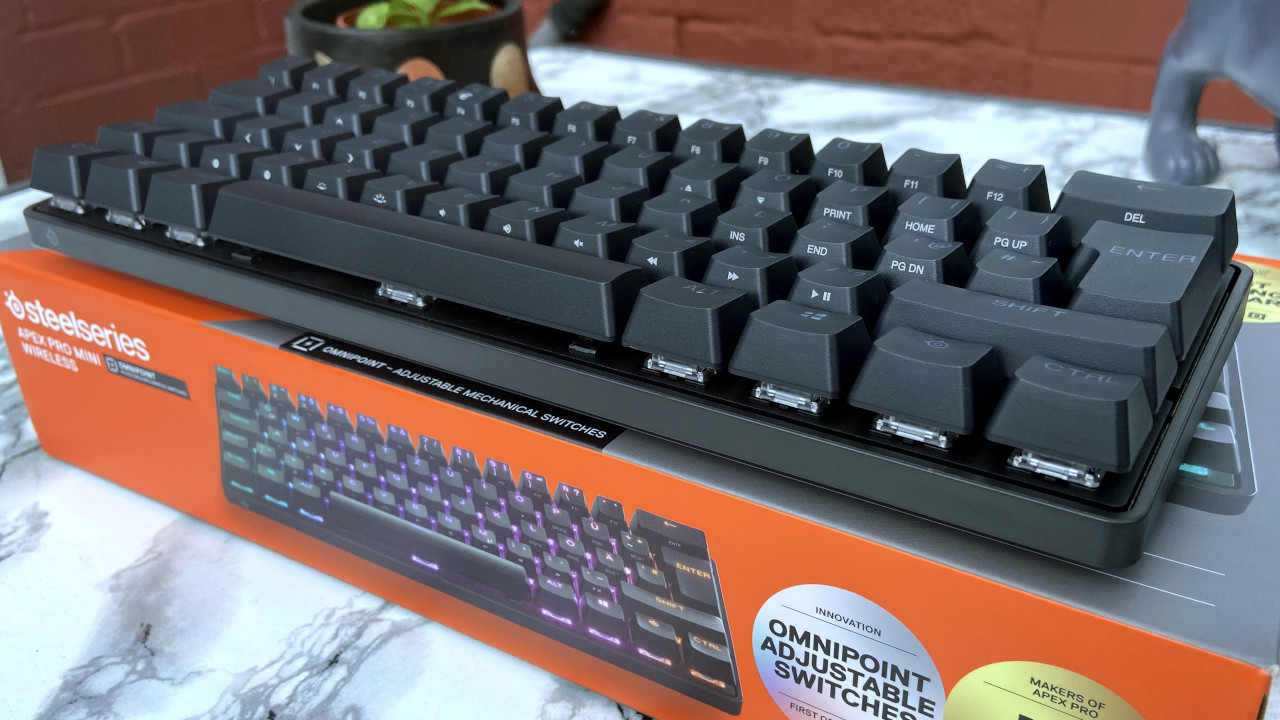
The Apex Pro Mini Wireless mechanical gaming keyboard is available through the official SteelSeries store and major third-party retailers, including Amazon and Best Buy, for a $240 MSRP.
| Category | Specification |
|---|---|
| Key switches | OmniPoint adjustable mechanical |
| Actuation point | 0.2-3.8mm |
| Connectivity | 2.4GHz, Bluetooth 5.0, USB-C |
| Battery life | 30 hours (wireless) / 40 hours (Bluetooth) |
| Lighting | Per-key RGB |
| Compatibility | Windows, macOS, Xbox, PlayStation |
| Dimensions | 293mm x 103mm x 40.3mm |
| Weight | 543g |
A wired version of the Apex Pro Mini is also on sale for $180 MSRP.
SteelSeries Apex Pro Mini Wireless: What's good
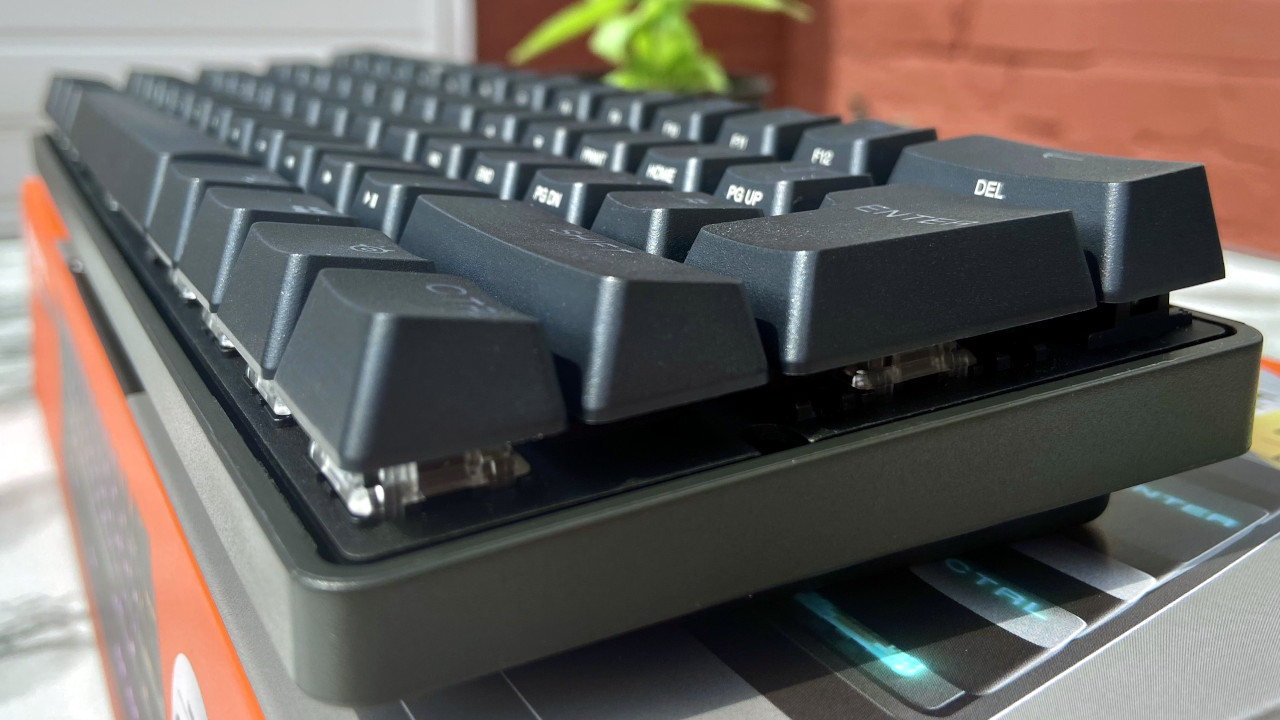
My first impressions of the Apex Pro Mini were pretty fantastic. Gorgeously displayed in a slide-out box, the keyboard feels sturdy and well made. Weighing around 540g, it's as tiny as it looks with a 293mm width, 103mm depth, and flip-out legs underneath with two height selections for typing at elevated angles.
Anyone without a spare USB-C port will need to use the included cable and USB-A adapter.
The keycaps have a rough finish, preventing finger slips you get with glossy keyboards and most laptops. Towards the rear is a sliding switch for selecting either 2.4GHz wireless via the included dongle or Bluetooth 5.0. A USB-C port allows for wired use with and updating firmware with an included cable, and a small keycap puller is in the box if you want to make any changes.
All the latest news, reviews, and guides for Windows and Xbox diehards.
Setting the Apex Mini up was breezy for the most part. The dongle automatically detects the keyboard, and I was able to start typing right away and enjoy the default lighting state, displaying a slow right-to-left rainbow fade. Anyone without a spare USB-C port will need to use the included cable and USB-A adapter, which allows the dongle to be placed farther from a PC tower and on a desk instead.
The SteelSeries GG software is recommended early in the instruction manual, used to customize the RGB lighting, help create button macros, and assign dual functions to the OmniPoint adjustable switches. It's not mandatory since you can access the features on a hardware level. Holding the SteelSeries logo button has each key with secondary functions light up with a warm orange color.
I adjusted the lighting brightness with the C and V keys, the actuation point with I and O to make for lighter keypresses and even recorded complex macros with the X key. Now I can type out "Windows Central is the best" with one key, which I'll no doubt use all the time.
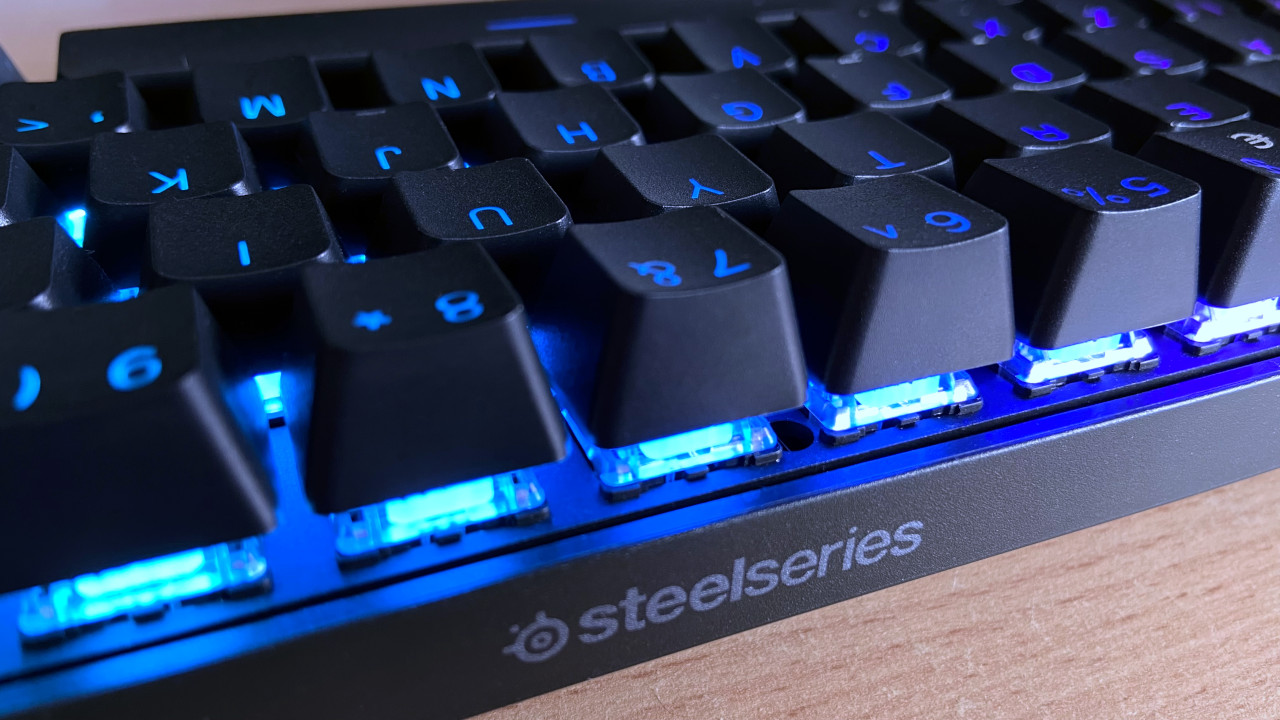
Up to three paired Bluetooth devices remain in memory, so quick switching between my tablet and PC is incredibly easy with a couple of keystrokes. Having this much functionality without software is fantastic, but the SteelSeries GG Engine holds the key to the unique OmniPoint dual-bindings.
In the app, you can determine the depth for each key, either for regular presses or dual actuation, from a feathered 0.2mm to a total of 3.8mm. During my time with the Apex Pro Mini, everyday typing felt too sensitive on anything less than 3.8mm, and I'll get into that later, but the potential for customization here is wild. Gaming, in particular, feels incredibly responsive with a shallow setting.
The GG engine is where an extra level of personalization comes into play, with features like per-key RGB and game-specific events triggering lighting scenes, all still available on this mini version of the Apex Pro.
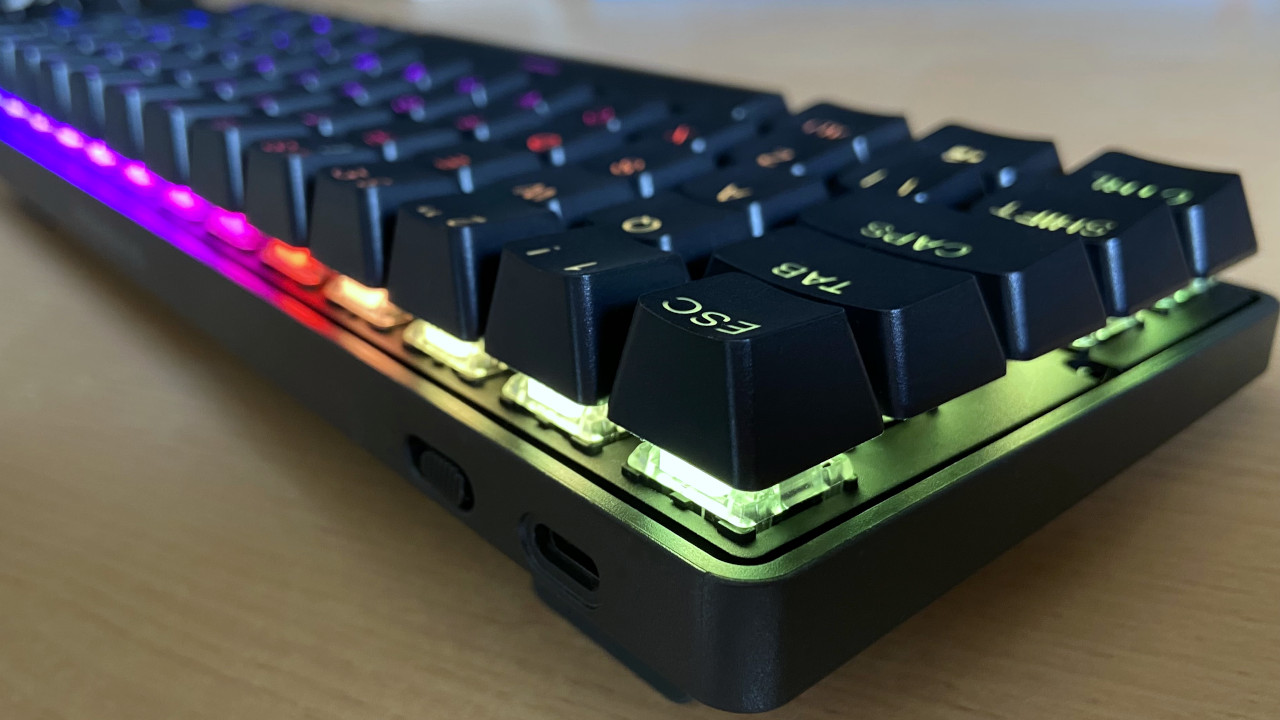
There are plenty of options for the vibrant lighting, being one of the high-end SteelSeries keyboards in the range. However, you might want to turn down the brightness like I did because the maximum setting is too bright at night and shortens wireless battery life.
Since the main draw of the Pro keyboards is the OmniPoint mechanical switches, one of the early tests was finding exactly how they perform compared to standard variants. With a minimum actuation as shallow as 0.2mm, it's already much lower than the apparent closest comparison, somewhere between Cherry MX red and silver switches, with a slightly quieter sound than expected.
The macro functions aren't unique to the Apex Pro Mini, but its tiny dimensions make them extra helpful. Missing a dedicated numpad and arrow keys affects my regular workflow, with muscle memory having me reach for phantom keys no longer present. Creating a macro to type out a common filename suffix and extension at the touch of one key made my working week much more manageable with this space-saving keyboard.
Dropping to a 60% size keyboard isn't as drastic as it might seem, especially when it's one as gorgeous as the Apex Pro Mini.
It's not something I expected from a gaming-centric keyboard, but the potential for time-saving shortcuts comes to mind for complex MMO games instead of just appealing to fast-paced shooters with the feathered switch actuation.
After a few days, the SteelSeries button started to feel like second nature to access the more obviously placed secondary functions like arrow keys underneath WASD, print screen under P, and delete underneath backspace.
SteelSeries Apex Pro Mini Wireless: What's not so good
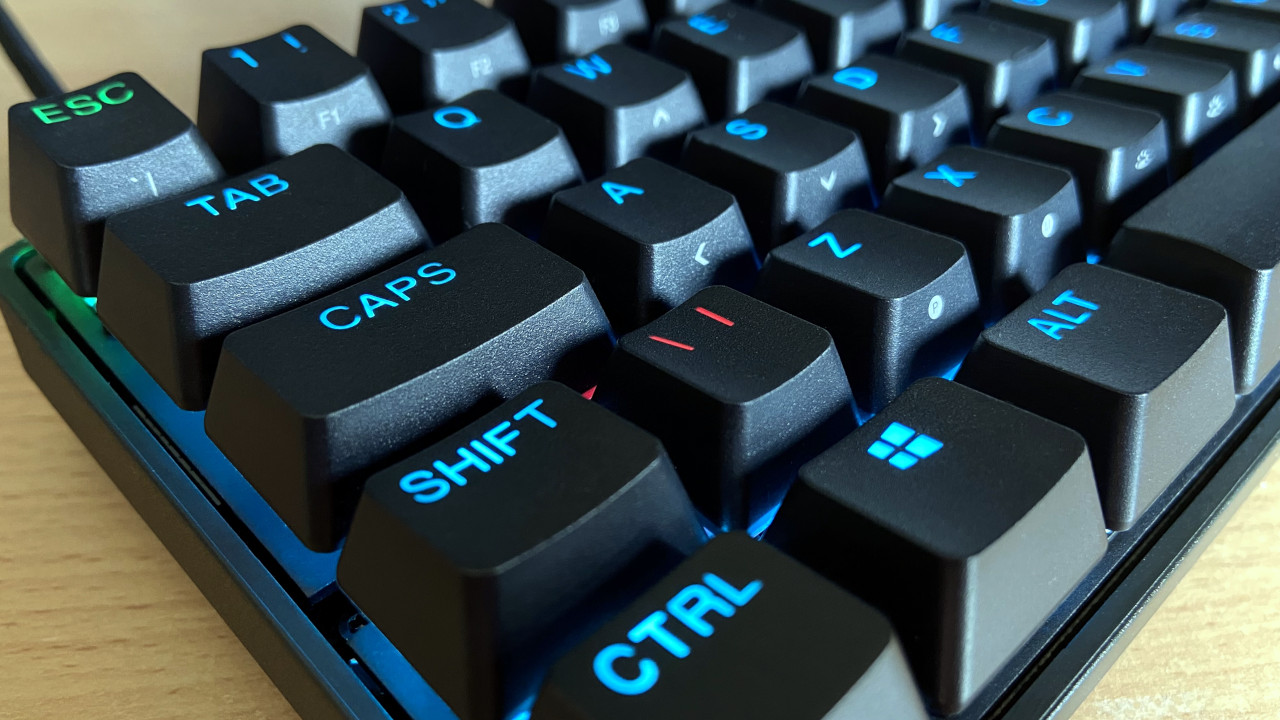
Despite the advantages of its unique features, a few drawbacks and annoyances are hard to ignore. Only the standard, primary functions are illuminated by the brilliant RGB lighting. Secondary options are front-facing on the keycaps but printed in opaque white, practically invisible in the dark. If you're unwilling to memorize where less common keys are, you will struggle to hit them in a hurry.
The arrow key placements make sense to any gamer familiar with the WASD convention but remembering the exact position of SteelSeries-specific functions like backlight brightness and macro recording becomes much more complicated in darker situations. Too often did I have to switch on a lamp or shine a phone torch at the Apex Pro to see where something like "page down" was hiding.
You can, of course, use the SteelSeries GG app to customize the bindings for every single key and set personal macros, but it still becomes a memory game. The illumination section currently lacks the reactive layer on the Apex Pro Mini, which is a massive disappointment for such a high-end keyboard. While the default active RGB scenes look nice enough, they're just background decoration until an update enables real-time typing effects.
Update: SteelSeries GG Engine update 22.0.0 includes the reactive RGB layer for the Apex Pro Mini
On-screen colors in the GG engine don't accurately represent what you see on the per-key RGB.
Unnecessary advertisements for giveaways surround the GG Engine, alongside audio-centric Sonar software designed to enhance gameplay sounds and Moments, a clip recording tool similar to NVIDIA Flashback. It means more bloated background updates for unrelated tools.
On-screen colors in the GG engine don't accurately represent what you see on the per-key RGB either, and the dual-actuation sections lack clear explanations or suggestions for practical uses. Software updates and even a UI redesign would go a long way for a keyboard with such potential.
Anyone without a dedicated USB-C port or spare cable will struggle to update the firmware since SteelSeries requires you to have the dongle and keyboard connected simultaneously. I had to search for an extra cord that wasn't designed purely for charging devices and could communicate with the keyboard's internal hardware.
As a daily driver (keyboard), I miss the feeling of tactile feedback.
Plus, whenever the keyboard is connected via USB for charging, you're treated to a flashing green escape key. I'm sure it's intended to be a helpful indicator, but it quickly becomes a distraction.
Setting a light actuation is ideal for fast-paced gaming, quickly moving around and hitting commands with a feather touch, but typing doesn't feel nearly as satisfying. Although the OmniPoint switches offer massive potential for creative binds and macros, the linear switches grow a little tiresome after hours of use. As a daily driver, I miss the feeling of tactile feedback reminiscent of Brown switches, but this won't affect the score since it's purely down to personal taste.
SteelSeries Apex Pro Mini Wireless: The competition
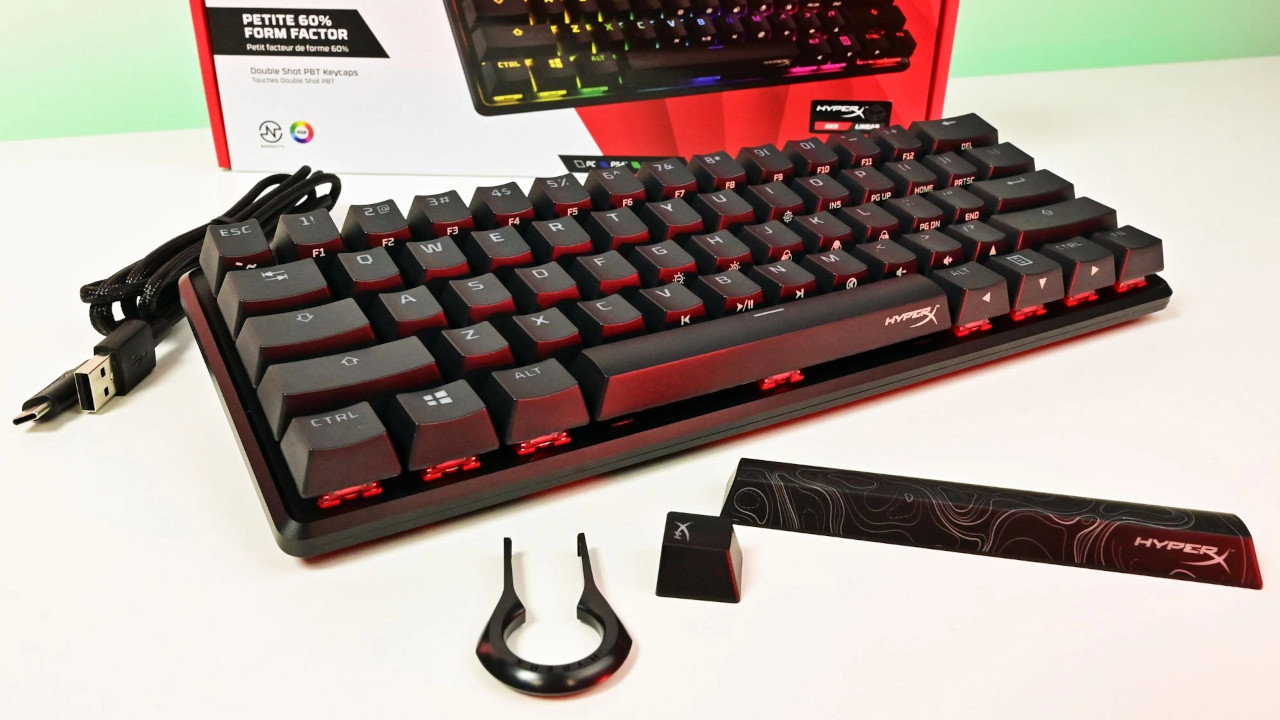
The most obvious downside to the Apex Mini Pro wireless is the price, which is far higher than its competitors. You can save money by picking up a wired 60% keyboard like the HyperX Alloy Origins 60, featuring the same linear switches and per-key RGB. You'll still struggle to see secondary functions on keys since they're not illuminated, but at $99 MSRP, it's less of an issue if you don't mind a wired keyboard.
If the dual-action keys are the most attractive feature, then the Razer Huntsman Mini Analog has everything that HyperX offers, plus dual-step actuation switches for $150 MSRP. Check out our full-size Razer Huntsman V2 Analog review for an idea of how Razer performs with a keyboard in this range.
ASUS offers a more affordable alternative in the ROG Falchion, a 65% wireless mechanical keyboard with an extra row of keys. It features a side-mounted touch panel for customizable shortcuts, and reliable Cherry MX switches for $150 MSRP.
Even the wired variant of the Apex Pro Mini offers better value at $180 MSRP, but the price is still a jump above the competition.
SteelSeries Apex Pro Mini Wireless: Should you buy?
You should buy this if ...
- You want a responsive gaming keyboard
- You like linear mechanical switches
- You need wireless portability
You shouldn't buy this if ...
- You're not a gaming enthusiast
- You prefer tactile mechanical switches
- A wireless keyboard isn't an absolute necessity
Dropping to a 60% size keyboard isn't as drastic as it might seem, especially when it's one as gorgeous as the Apex Pro Mini, and it was comfortable enough to be my daily driver once I memorized the shortcuts. If the price were a little lower, I'd have no problem ranking it towards the top of our best gaming keyboards alongside the full-sized Apex Pro. However, if wireless connectivity isn't a concern, you could always stick with the wired variant of the Mini Pro.
Per-key RGB looks beautiful, but secondary functions are printed onto the caps and are practically invisible in darker environments. The SteelSeries GG engine needs some updates to bring out the full potential of this gorgeous mechanical keyboard. It's ideal for fast-paced gaming with ultra-light actuation as long as you're a fan of linear switches and you don't get tempted away by competitors offering more value for money.
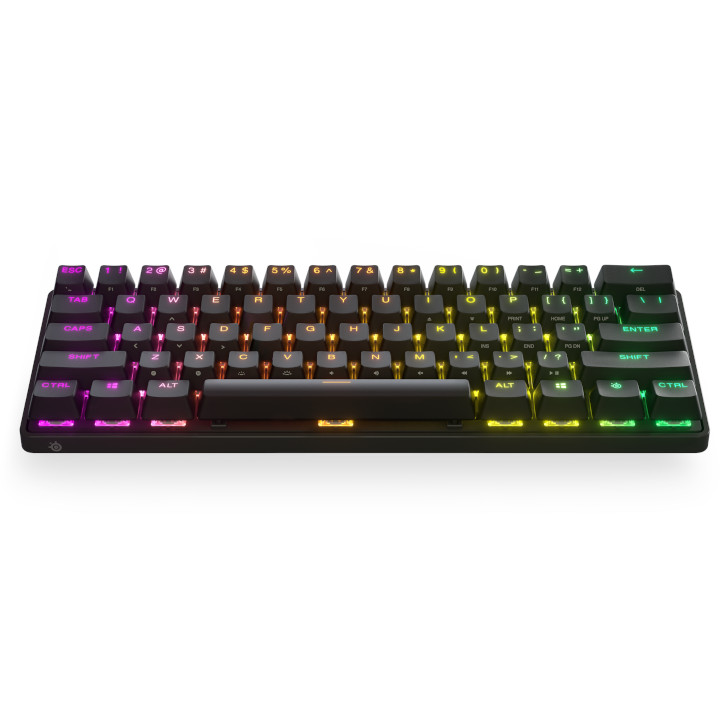
A 60% variation of the full-sized Apex Pro, the Mini wireless features 2.4GHz and Bluetooth 5.0 paired with adjustable key actuation making it one of the fastest keyboards. Per-key RGB and a high-quality construction complete this gorgeous offering.

Ben is a Senior Editor at Windows Central, covering everything related to technology hardware and software. He regularly goes hands-on with the latest Windows laptops, components inside custom gaming desktops, and any accessory compatible with PC and Xbox. His lifelong obsession with dismantling gadgets to see how they work led him to pursue a career in tech-centric journalism after a decade of experience in electronics retail and tech support.
